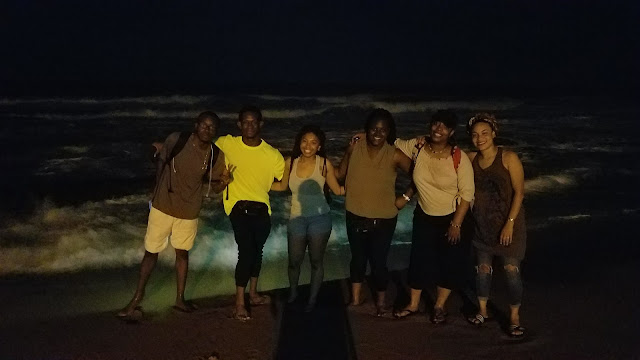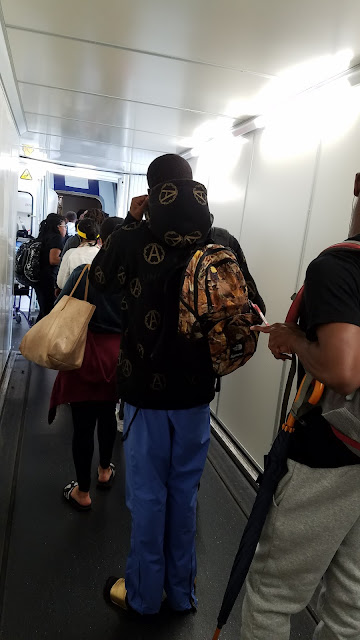As I sit under a cabana in a wonderful beach side resort, sipping on my so-felt much earned beer after a hot day's worth of visiting historic sites, only one question comes to mind. How could have slavery existed? How could man do what he did to fellow human beings? I can feel the cool winds brought on by the crashing Atlantic waves. I can hear them roaring and crashing against the rocks and sand. The only difference is, I am sitting in a resort as a free and privileged human being, enjoying the beautiful setting. The ancestors of some of my students were locked up in dungeons hearing the same waves that I hear knowing well they were at the point of no return. Slavery was rooted in racism, justified by the bible, and promulgated by Eurocentrism. Whites felt that other races, but particularly Black Africans were not equals but rather sub-humans.
 |
| Local children enjoying the beach using styrofoam as surfing boards |
 |
| Cape Coast Castle |
 |
| Cape Coast Castle |
We are headed from Kumasi to Cape Coast - our base for the next two days. About an hour from Cape Coast, we stopped in Assin Manso, a small village that was a stopping point during the slave trade. The river here was used to bathe and clean the Africans who were captured by or sold to Europeans. They were then branded to be auctioned off and taken to Cape Coast. I wonder what was going through my students' minds as we hiked thru the forest path to the river knowing that their ancestors walked in these same footsteps, except in iron shackles, bonded, weak, and defeated? Our guide gave us an emotional history lesson about the Slave River. As a non African American, it was beyond upsetting to me. It was clearly visible how emotional this was to my students and I simply cannot comprehend how they felt.
 |
| Assin Manso Slave River |

After the Slave River, we headed on to Cape Coast Castle. Initially, it was a trading post in the 1400s. Eventually, it was used to house slaves. Our guide walked us thru the hallways, the male and female dungeons, holding cells, the church (how ironic), and the entire castle. Even abused animals cooped up in enclosures had better living conditions than these slaves. They were often kept in dark dungeons for up to three months, defecating next to each other, urinating and vomiting on each other, struggling next to dead bodies of their comrades, and praying for divine intervention while the Europeans prayed, preached, and sang right above them in their church. Talk about irony! The "Point of No Return" was the castle or the door that led to the Atlantic. Once Africans went thru this door, there was no returning back. They had to leave behind their families, their friends, their way of life, their culture, their mother land, and their dignity, only to face a two month perilous journey packed like sardines among disease infested neighbors, and dead bodies of friends. Ultimately, they ended up in a new land - a land of opportunity, a land of freedom, the United States which only applied to whites.
 |
| Point/Door of No Return |
After visiting Cape Coast Castle, we headed on to our resort right on the Atlantic Ocean. Today was an extremely emotional day. The Trans-Atlantic slave trade was one of the gravest sins committed in human history. As we get settled in, we will have time to reflect on what we experienced today.


















































